What Is Prostate Cancer?
Prostate cancer is one of the most common cancers among men. Approximately 1 in 9 men will be diagnosed with prostate cancer in their lifetime, and it is the second leading cause of cancer-related death in men in the United States.
While the majority of prostate cancers are early stage at diagnosis, a significant portion will have regional or distant metastases.
What Is Actinium-225 PSMA Therapy?
Table of Contents
Patients with advanced stages of prostate cancer struggle to find a suitable treatment for their underlying condition. Metastatic Castrate Resistant Prostate Cancer (mCRPC) is an advanced stage of prostate cancer that often proves to be fatal.
However, the introduction of the Actinium 225 PSMA has been an option for patients with advanced mCRPC, who typically have been heavily pretreated with current existing forms of therapy.
Doctors found that even patients with advanced and heavily pretreated mCRPC show good response with Actinium 225 PSMA therapy.
How does Actinium-225 PSMA Therapy work?
Actinium 225 PSMA therapy is a prostate cancer treatment that makes use of an alpha-emitting radioisotope that is short-range and high energy, which makes it effective in specifically targeting and destroying cancer cells.
What Are the Expected Outcomes of Actinium-225 PSMA Therapy?
In a study, out of 256 mCRPC patients, 62.8 % acquired a biochemical response after being treated with the Actinium 225 PSMA therapy. In addition, the treatment has also resulted in a ≥50% decline in the prostate-specific antigen (PSA).
In a different study, doctors took 17 patients and treated them with Actinium-225 PSMA. Out of the 17 patients, 14 of them experienced a PSA decline of ≥90%. None of the patients had adverse side effects or were required to discontinue therapy with Actinium-225 PSMA.
These early studies demonstrate the potential of Actinium 225 PSMA in treating mCRPC patients.
What Are the Potential Side Effects of Actinium-225 PSMA Therapy?
There have been some side effects experienced by patients who have undergone treatment with Actinium 225 PSMA.
Patients will typically experience decreased saliva production leading to dry mouth, which can cause some of them to stop the treatment. Additionally, a portion of patients will experience marrow suppression due to the radiation.
Who Will Benefit From Treatment Actinium-225 PSMA Therapy?
Patients with advanced stages of prostate cancer known as the mCRPC will benefit from Actinium-225 PSMA Therapy. In addition, Actinium-225 PSMA Therapy has proven, in some cases, to be more effective than Lutetium-177 PSMA Therapy.
Therefore, patients who have exhausted all other forms of prostate cancer treatment may want to speak to their doctor about the potential benefits of Actinium-225 PSMA Therapy.
What Are the Contraindications to Actinium-225 PSMA Therapy?
Relative contraindications:
- Poor underlying marrow function, which may increase the risk of experiencing haematological toxicity in the form of anaemia, thrombocytopenia, and leukopenia.
- Poor functional or ECOG status, in which the therapy may not be able to achieve a quality of life improvement.
- Poor tumour PSMA ligand uptake on PET/CT studies.
Discussion with our physician regarding the potential risks and benefits of therapy will be required before commencing treatment.
What Initial Investigations Are Needed Before Beginning Treatment With Actinium-225 PSMA Therapy?
Before a patient undergoes the Actinium 225 therapy, doctors will have to screen them. This screening helps our doctors understand the exact stage of their cancer.
A baseline blood investigation of marrow function, renal function, and PSA levels is usually needed. A recent PSMA PET/CT will be required for baseline staging and assessment of tumour PSMA ligand avidity.
A detailed history of all previous therapies (hormonal, chemotherapy, radioligand, radiotherapy, targeted therapy) will also be taken.
What to Expect During Treatment With Actinium-225 PSMA Therapy?
The treatment using the Actinium 225 PSMA typically takes approximately one hour and can comfortably be done as an outpatient procedure.
The process requires an intravenous line to be inserted, and the Actinium-225 PSMA is hand injected slowly. No complications or side effects are expected during the actual infusion.
If you have any questions or uncertainties, please feel free to speak to our doctors or your medical care team.
Useful Links
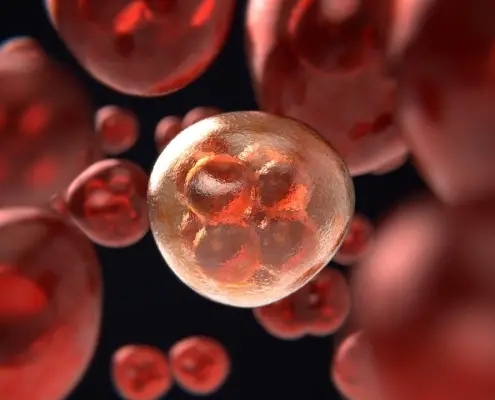
What Is Theranostics?

Coping With Prostate Cancer: Your Symptoms, Well-Being, and Finding Support
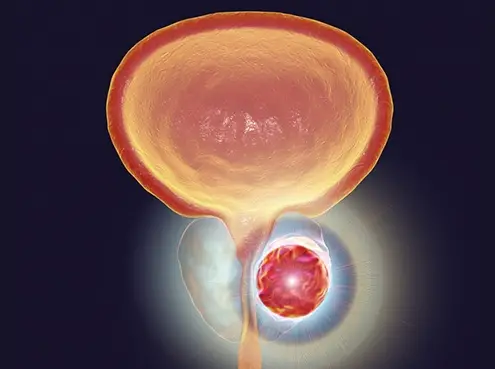
What to Expect: Lutetium-177 Prostate-Specific Membrane Antigen (PSMA) Therapy
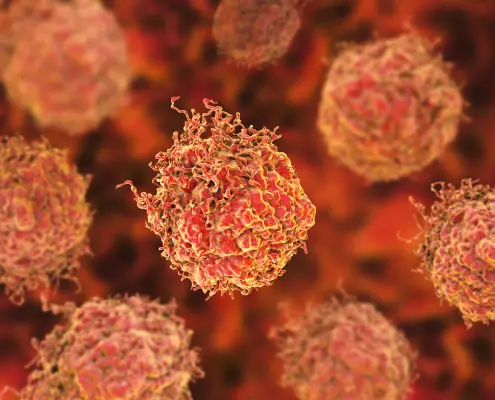
What to Expect: Radium-223 Therapy (Xofigo)

Prostate Cancer: Causes, Symptoms, Diagnosis, Treatment
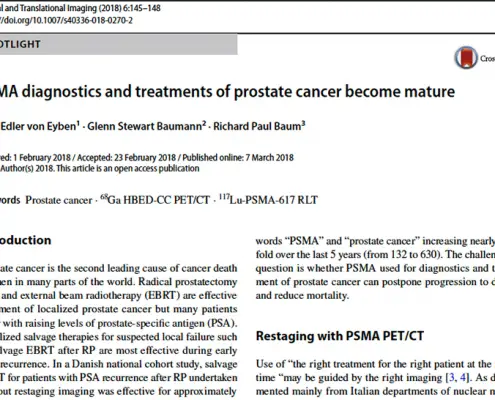 https://theranostics.sg/wp-content/uploads/2020/05/PSMA-Review.jpg
546
750
Dr Andrew Tan
https://theranostics.sg/wp-content/uploads/2020/01/Theranostics_logo-1-300x78.png
Dr Andrew Tan2020-03-30 04:06:012022-04-12 05:46:26PSMA Therapy Review
https://theranostics.sg/wp-content/uploads/2020/05/PSMA-Review.jpg
546
750
Dr Andrew Tan
https://theranostics.sg/wp-content/uploads/2020/01/Theranostics_logo-1-300x78.png
Dr Andrew Tan2020-03-30 04:06:012022-04-12 05:46:26PSMA Therapy Review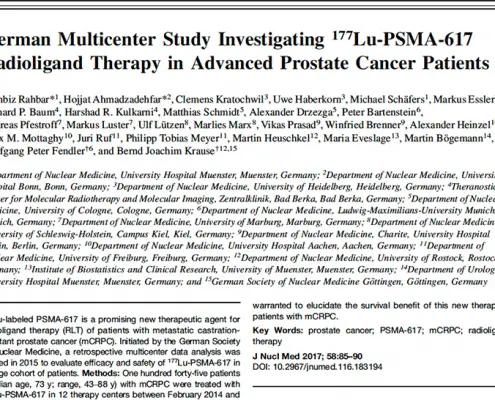 https://theranostics.sg/wp-content/uploads/2020/05/German.jpg
546
750
Dr Andrew Tan
https://theranostics.sg/wp-content/uploads/2020/01/Theranostics_logo-1-300x78.png
Dr Andrew Tan2020-03-30 04:04:412022-04-12 06:17:07PSMA German Multicenter Trial
https://theranostics.sg/wp-content/uploads/2020/05/German.jpg
546
750
Dr Andrew Tan
https://theranostics.sg/wp-content/uploads/2020/01/Theranostics_logo-1-300x78.png
Dr Andrew Tan2020-03-30 04:04:412022-04-12 06:17:07PSMA German Multicenter Trial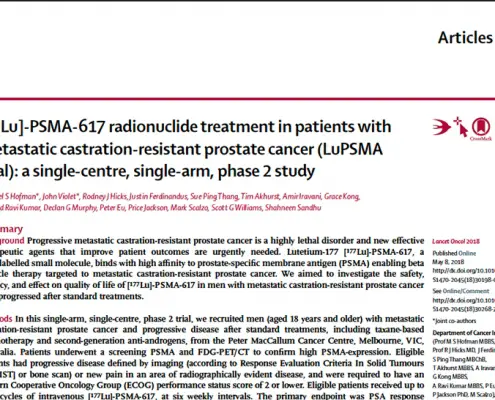 https://theranostics.sg/wp-content/uploads/2020/05/Phase-2-PSMA.jpg
546
750
Dr Andrew Tan
https://theranostics.sg/wp-content/uploads/2020/01/Theranostics_logo-1-300x78.png
Dr Andrew Tan2020-03-30 03:13:592022-04-14 09:41:54Phase 2 trial evaluating Lu177 PSMA
https://theranostics.sg/wp-content/uploads/2020/05/Phase-2-PSMA.jpg
546
750
Dr Andrew Tan
https://theranostics.sg/wp-content/uploads/2020/01/Theranostics_logo-1-300x78.png
Dr Andrew Tan2020-03-30 03:13:592022-04-14 09:41:54Phase 2 trial evaluating Lu177 PSMAWhat are the expected outcomes of Radium-223 Therapy (Xofigo)?
The aim of the therapy is to control the bony metastases and to reduce symptoms of bony pain (if present).
Radium-223 (Xofigo) therapy is a therapeutic agent that was shown to significantly extend overall survival in patients. This was demonstrated in a double blind, randomised, placebo controlled phase III clinical trial of 921 patients with castrate resistant Prostate Cancer with symptomatic bony metastases and no known visceral metastases (Alsympca trial).
Following therapy, there is typically mild-moderate response in PSA levels (50% will have a drop of more that 30%), while drop in ALP levels is typically more dramatic.
What are the potential side effects?
Radium-223 (Xofigo) has a well-documented safety profile.
The most common side effect is hematological suppression (lowered red blood cells, white blood cells and platelets). Low grade myelosuppression (Grade 1-2) is common, while more severe myelosuppression (Grade 3-4) occurs in approximately 5-10% of patients.
Such hematological suppression is typically transient, but the risk of myelosuppression is higher and more refractory in heavily pre-treated patients and those with extensive bony marrow disease.
Other side effects include vomiting, diarrhoea and generalised weakness, but these are typically transient and self limiting.
Who will benefit from Radium-223 (Xofigo) Therapy?
The typical patients who may benefit are those with metastatic Castrate Resistant Prostate Cancer (mCRPC) with bony metastases and no visceral metastases, and with biochemical progression of disease.
What are the contraindications to Radium-223 (Xofigo) Therapy?
Relative contraindications
- Concurrent Abiraterone acetate, increased risk of fractures and mortality shown
- Impaired marrow function (platelet < 50 x 109/L, Hb < 100 g/L, absolute neutrophil count < 1.5 x 109/L)
- Recent radiotherapy (6 weeks) or concurrent chemotherapy
- Uncontrolled intercurrent illness or poor ECOG status
- Bone scan showing poor bony lesion tracer avidity
Discussion with the physician in regards to the potential risks and benefits of therapy will be needed prior to commencing therapy.
What are the initial investigations needed?
Imaging Studies
- Bone scan (to assess bony metastases tracer avidity)
- PSMA Positron Emission Tomography / Computed Tomography (PET/CT) scan (good to have, to exclude visceral metastases)
Blood Investigations
- Full Blood Count (FBC)
- Renal Function Test
- Prostate Specific Antigen (PSA)
- Alkaline Phosphatase (ALP)
- Lactate Dehydrogenase (LDH)
Functional Status
- ECOG Status Score
What to expect during treatment?
Radium-223 (Xofigo) therapy can be done on an outpatient basis. It is expected to take approximately 30 minutes in total, and you will be in the Nuclear Medicine department for the duration of the therapy.
Intravenous lines will be required for the therapy.
The Radium-223 infusion is given as a slow bolus over 5 minutes, and no immediate side effects are expected. The infusion should be a painless procedure.
After the infusion is done and there are no complications encountered, you will be free to leave the Nuclear Medicine department. If you require admission for observation, we will make the necessary arrangements.
An appointment for the follow-up will be confirmed or arranged for you prior to discharge.




